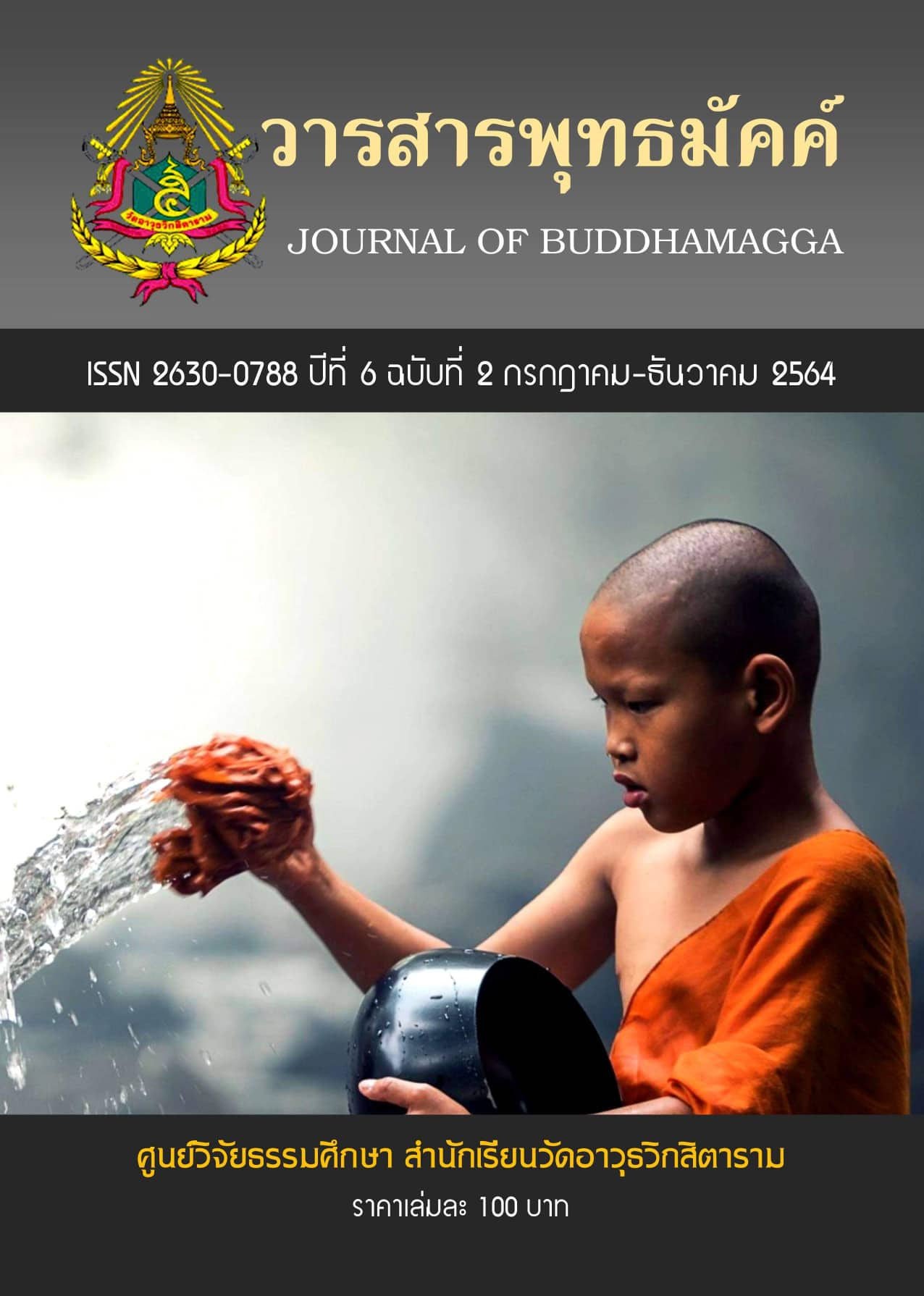Development of Blended e-Learning Courseware in Flipped Classroom to encourage Self-directed Learning for Bachelor's Degree Private Higher Education Institutions in Thailand
Keywords:
e-Learning Courseware, Flipped Classroom, Self-directed learningAbstract
This research Objective: 1) Develop a blended e-learning course According to the classroom concept is inverted to build self-learning skills for undergraduate student’s Private higher education institutions in Thailand to be effective according to the criteria 80/80 2) Compare the test scores before studying with the achievement test scores. of undergraduate student’s Private higher education institutions in Thailand Learned with a combination of e-learning courses the concept of the classroom was reversed. 3) Study self-study skills. for undergraduate student’s Private higher education institutions in Thailand That study with a blended e-learning course According to the classroom concept is inverted the sample used in the research was undergraduate students. 80 private higher education institutions in Thailand by using simple random sampling. The research instruments were 1) e-learning courses 2) pre-study tests 3) achievement tests. Study and 4) self-study skills test the statistics used for data analysis were mean. Standard Deviation and Dependent Sample t-test
The results of the research were as follows: 1) E-learning courses Has efficiency criteria of 80/80, which is 81.17 / 83.67. 2) Undergraduate students' academic achievement test scores. Private higher education institutions in Thailand from learning with e-learning courses Higher than the test score before studying There were statistically significant at level. 01 and 3). Students had self-study skills. High level ( = 4.27, S.D. = 0.43), with students continuing to study in the e-learning course. Are keen on researching the e-learning course when in doubt. Have fun learning with e-learning courses and be able to find knowledge on their own.
References
เอกสารภาษาไทย
กิดานันท์ มลิทอง. (2548). เทคโนโลยีและการสื่อสารเพื่อการศึกษา. กรุงเทพฯ: อรุณการพิมพ์.
จตุรงค์ ตรีรัตน์. (2555). การพัฒนาบทเรียนอีเลิร์นนิง วิชาเทคโนโลยีสารสนเทศ เรื่องข้อมูลและสารสนเทศของนักเรียนชั้นมัธยมศึกษาปีที่ 1 โรงเรียนภัทรญาณวิทยา. การศึกษาค้นคว้าอิสระ ปริญญาศึกษาศาสตรบัณฑิต สาขาวิชาเทคโนโลยีการศึกษา, มหาวิทยาลัยศิลปากร.
จินตวีร์ คล้ายสังข์. (2556). อีเลิร์นนิงคอร์สแวร์ : แนวคิดสู่การปฏิบัติสำหรับการเรียนการสอนอีเลิร์นนิงในทุกระดับ. กรุงเทพฯ: สำนักพิมพ์แห่งจุฬาลงกรณ์มหาวิทยาลัย.
ฐาปนีย์ ธรรมเมธา. (2557). อีเลิร์นนิง : จากทฤษฎีสู่การปฏิบัติ e-Learning: from theory to practice. กรุงเทพฯ: มหาวิทยาลัยไซเบอร์ไทยสำนักงานคณะกรรมการการอุดมศึกษา.
ณัฐพงศ์ สมปินตา. (2549). การผลิตบทเรียนอิเล็กทรอนิกส์บนเครือข่าย เรื่องสื่อการสอน. เชียงใหม่: มหาวิทยาลัยเชียงใหม่.
ถนอมพร เลาหจรัสแสง. (2545). Designing e-learning หลักการออกแบบและการสร้างเว็บเพื่อการเรียนการสอน. เชียงใหม่: มหาวิทยาลัยเชียงใหม่.
ถนอมพร เลาหจรัสแสง. (2546). Best Practice in Teaching with e-Learning. เชียงใหม่: สถานบริการเทคโนโลยีสารสนเทศ มหาวิทยาลัยเชียงใหม่.
ทิศนา แขมมณี. (2550). ศาสตร์การสอน : องค์ความรู้เพื่อการจัดการกระบวนการเรียนรู้ที่มีประสิทธิภาพ. กรุงเทพฯ: โรงพิมพ์แห่งจุฬาลงกรณ์มหาวิทยาลัย.
ธนภัทร วันทาพงษ์. (2554). การพัฒนาบทเรียน e-Learning วิชาฟิสิกส์ เรื่องโมเมนตัมและการชนสำหรับชั้นมัธยมศึกษาปีที่ 4. สาขาวิชาวิทยาศาสตร์ศึกษา, บัณฑิตวิทยาลัย มหาวิทยาลัยราชภัฏสงขลา.
นครินทร์ สุกใส. (2561). ผลการจัดการเรียนการสอนโดยใช้ห้องเรียนกลับด้านร่วมกับเกมมิฟิเคชันที่มีต่อความสามารถในการประยุกต์ความรู้ทางคอมพิวเตอร์ของนักเรียนมัธยมศึกษาตอนปลาย. วิทยานิพนธ์หลักสูตรปริญญาครุศาสตรมหาบัณฑิต, สาขาวิชาหลักสูตรและการสอน จุฬาลงกรณ์มหาวิทยาลัย.
ล้วน สายยศ และอังคณา สายยศ. (2553). เทคนิคการวิจัยทางการศึกษา. กรุงเทพฯ: สุวีริยาสาสน์.
วิจารณ์ พานิช. (2556). ครูเพื่อศิษย์สร้างห้องเรียนกลับทาง. กรุงเทพฯ: เอสอาร์พริ้นติ้งแมสโปรดักส์ จํากัด.
สามมิติ สุขบรรจง. (2554). การพัฒนาบทเรียน E-Learning รายวิชา “การแสดงและสื่อ”. สาขาวิชาภาพยนตร์และสื่อดิจิตอล, วิทยาลัยนวัตกรรมสื่อสารสังคม มหาวิทยาลัยศรีนครินทรวิโรฒ.
สุรศักดิ์ ปาเฮ. (2556). ห้องเรียนกลับทาง : ห้องเรียนมิติใหม่ในศตวรรษที่ 21. แพร่: สำนักงานเขตพื้นที่การศึกษาประถมศึกษาแพร่ เขต 2.
เอกสารภาษาอังกฤษ
Bergmann, J., & Sams, A. (2012). Flip your classroom: Reachevery student in every class day. International Society for Technology in Education.
Bonk, C. J., & Graham, C.R. (2006). The handbook of blended learning: global perspectives, local designs. San Francisco, CA: Pfeiffer publishing.
Guglielmino, Lucy Madsen. (1977). Development of the Self-Directed Learning Readiness Scale Dissertation. Georgia University.
The Training Place, (2004). Leadership and performance beyond expectations. New York: Free Press.
Waterhouse, S. (2005). The Power of E-Learning: The essential guide for teaching in the digital age. Boston, MA: Pearson Education, Inc.
Wilson, D., & Smilanich, E. (2005). The other blended learning: a classroom-centered approach. San Francisco, Calif.: Pfeiffer.
เว็บไซต์
Allen and Seaman. (2005). Growing by degree online Education in the UnitedStates. [Online]. Available form: http://elearning.ppu.edu/file.php/1/eLearning/elearning.pdf.
Donald Clark. (2003). Instructional System Design - Analysis Phase. [Online]. Available form: www.nwlink.com/-donclark/hrd/sat2.html.


